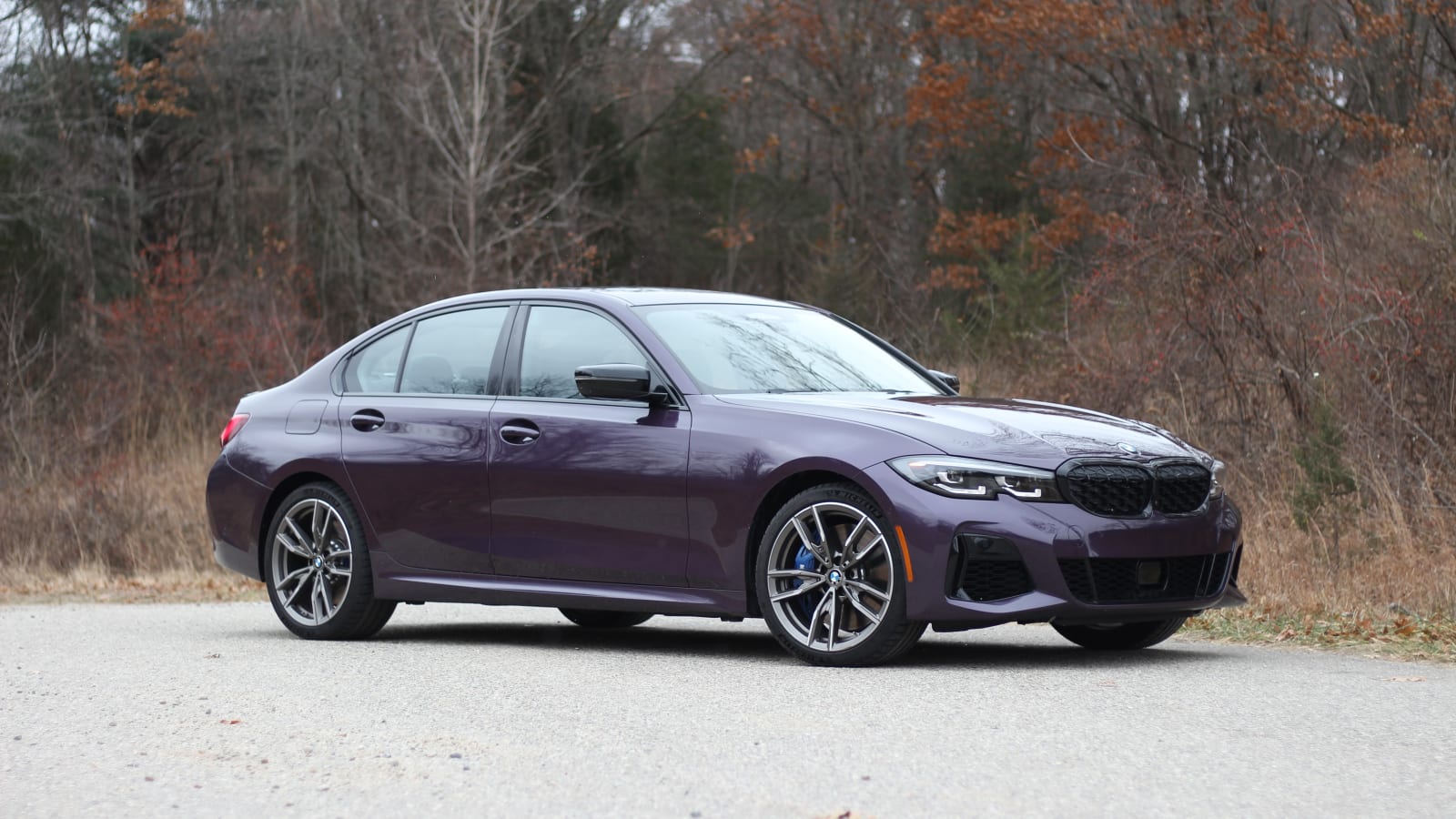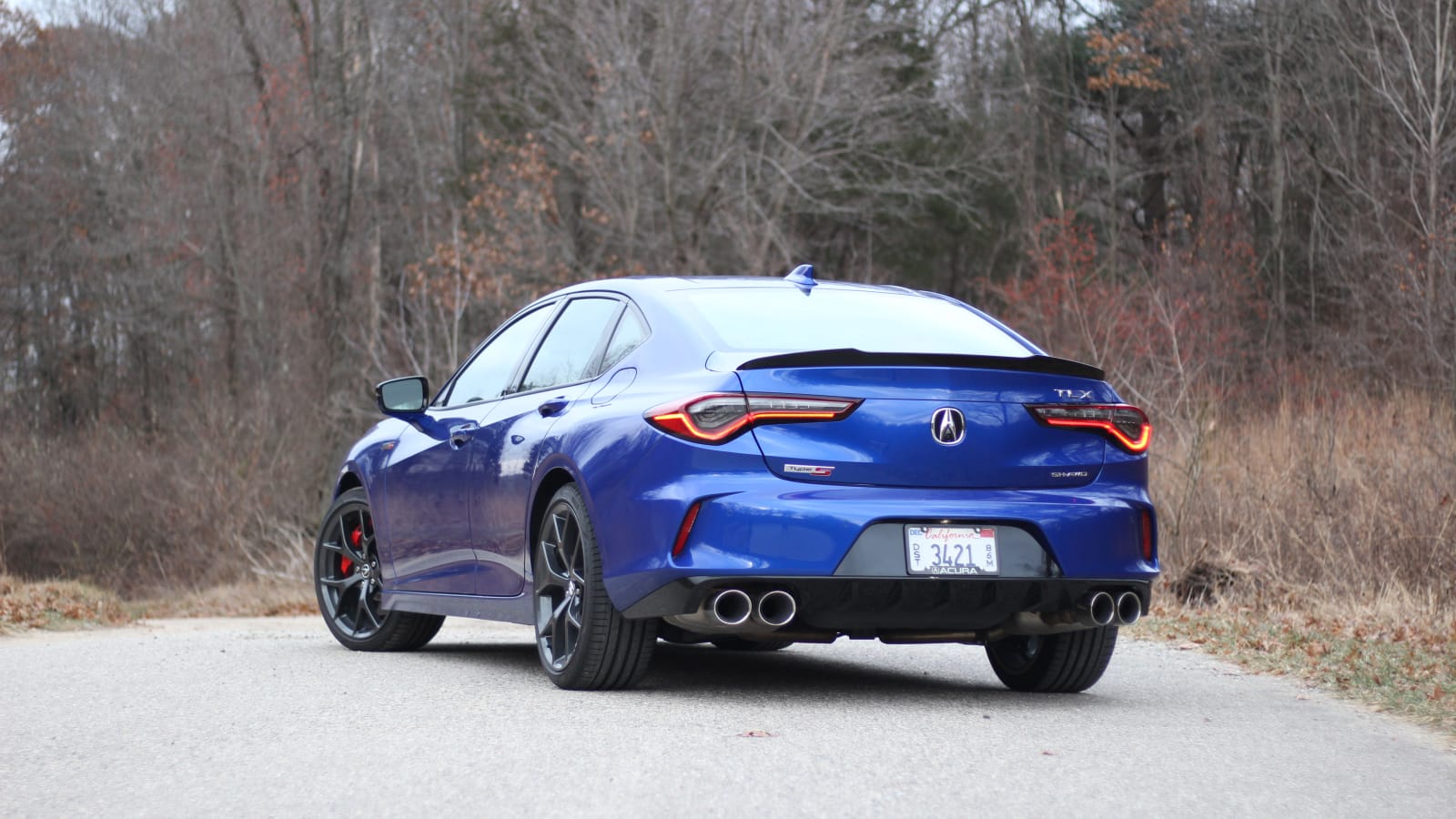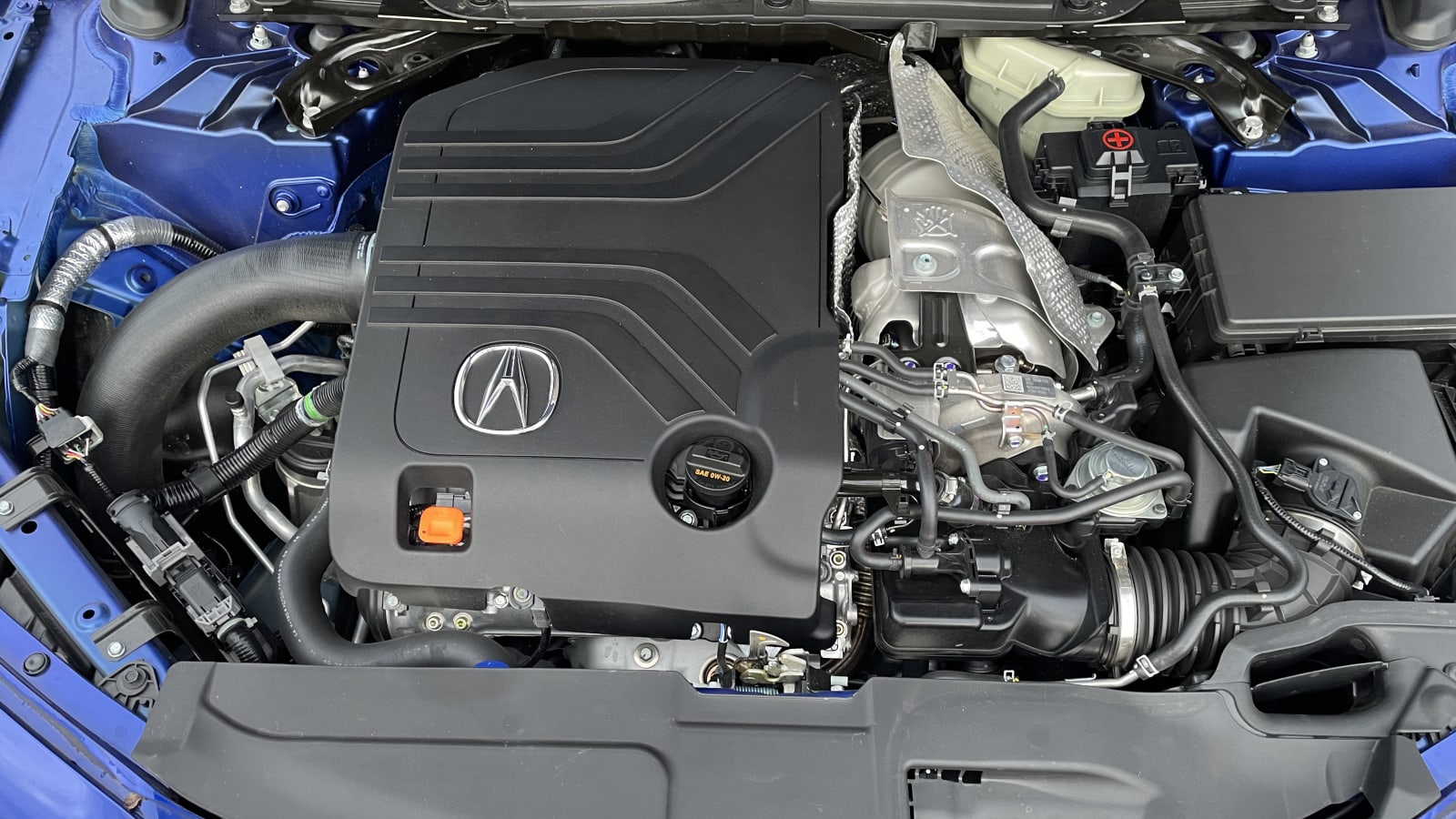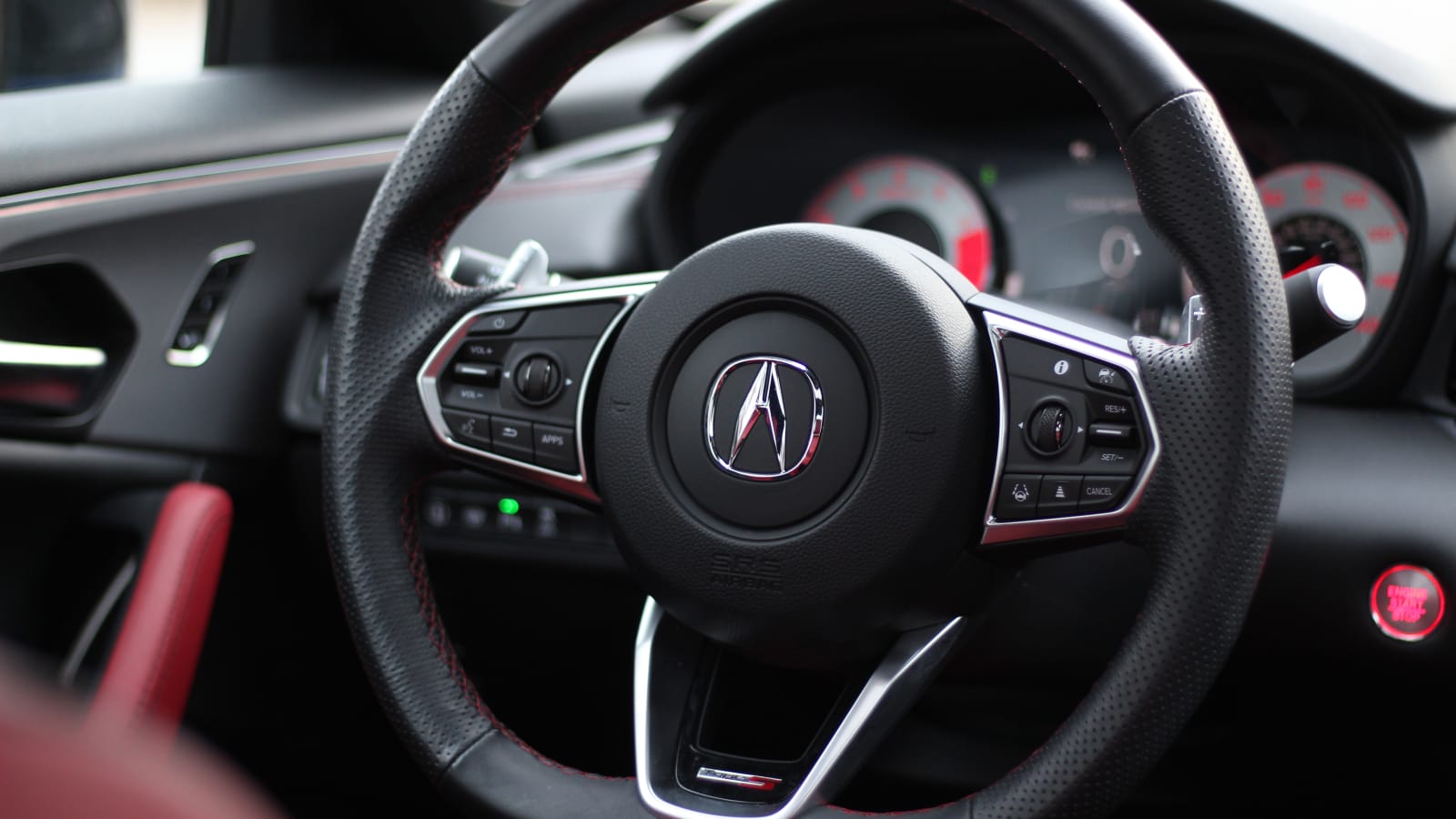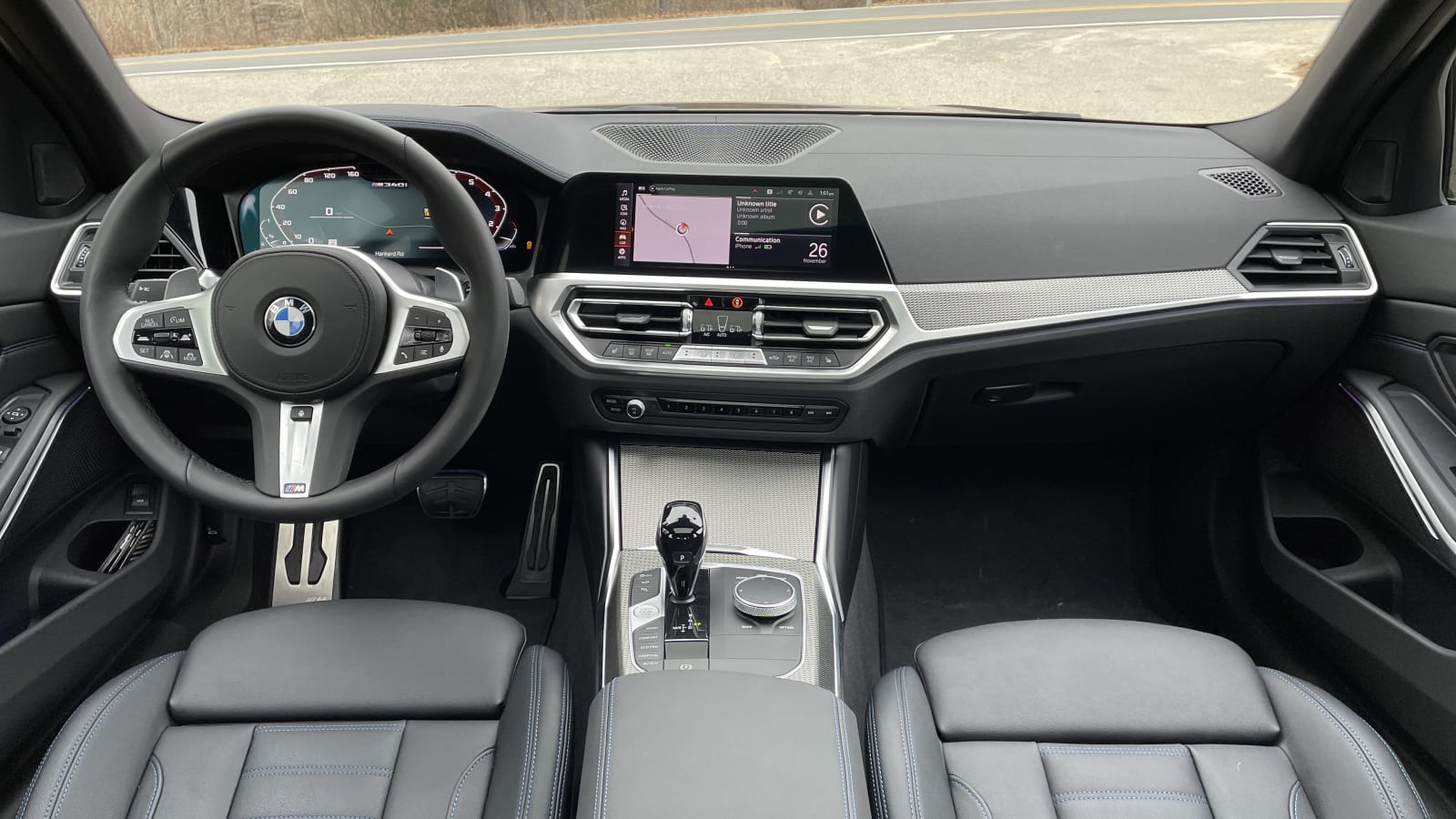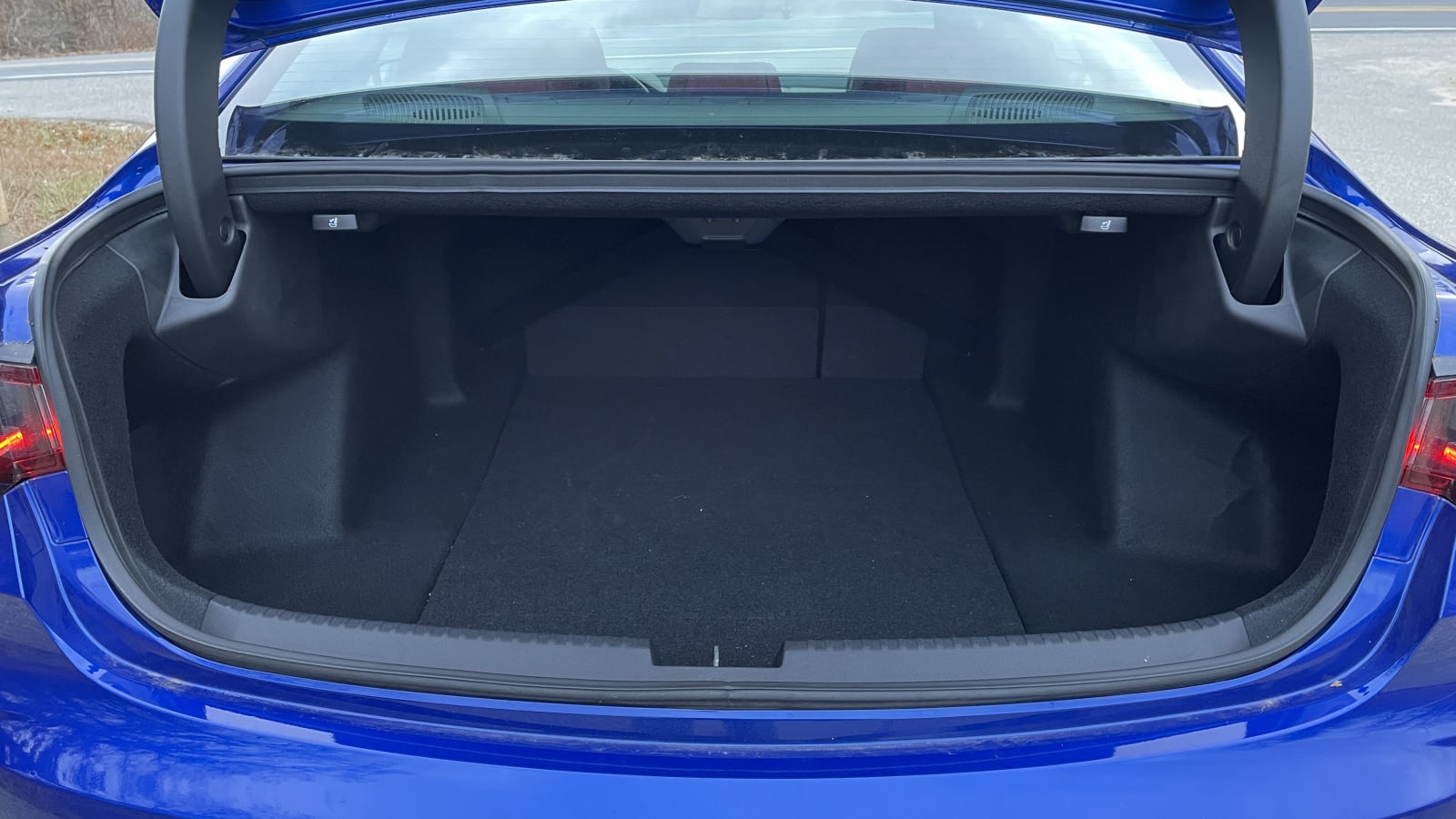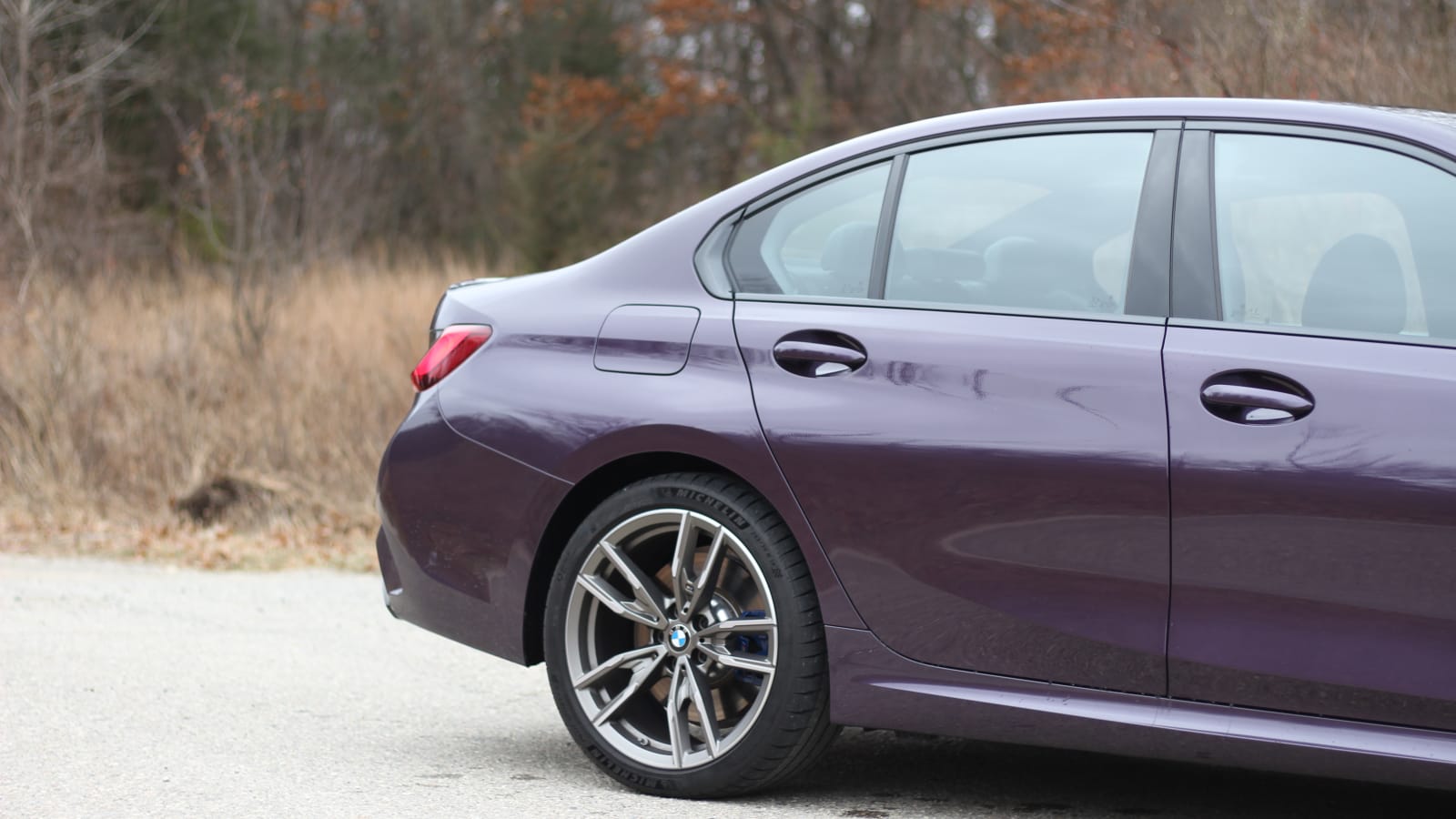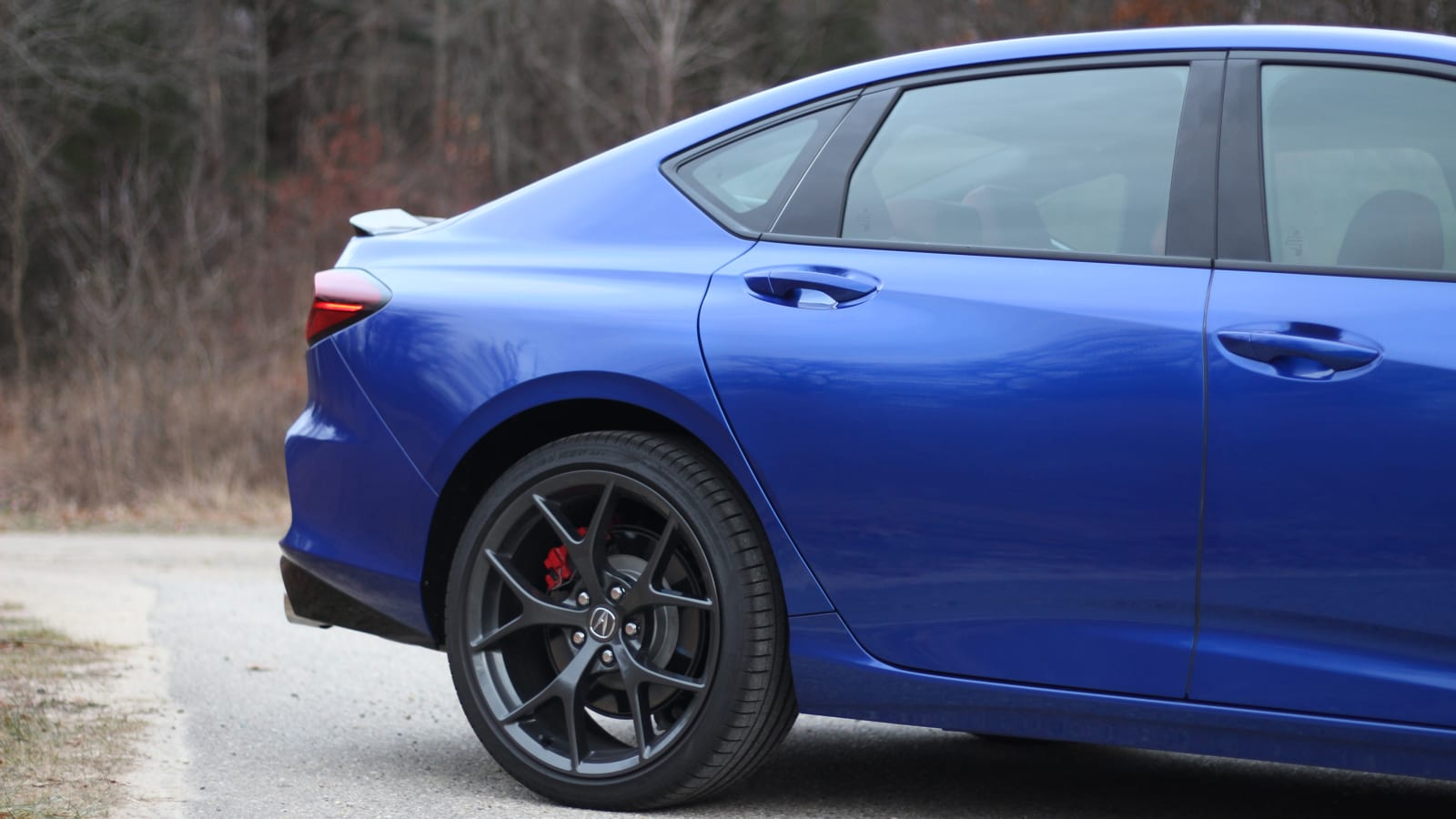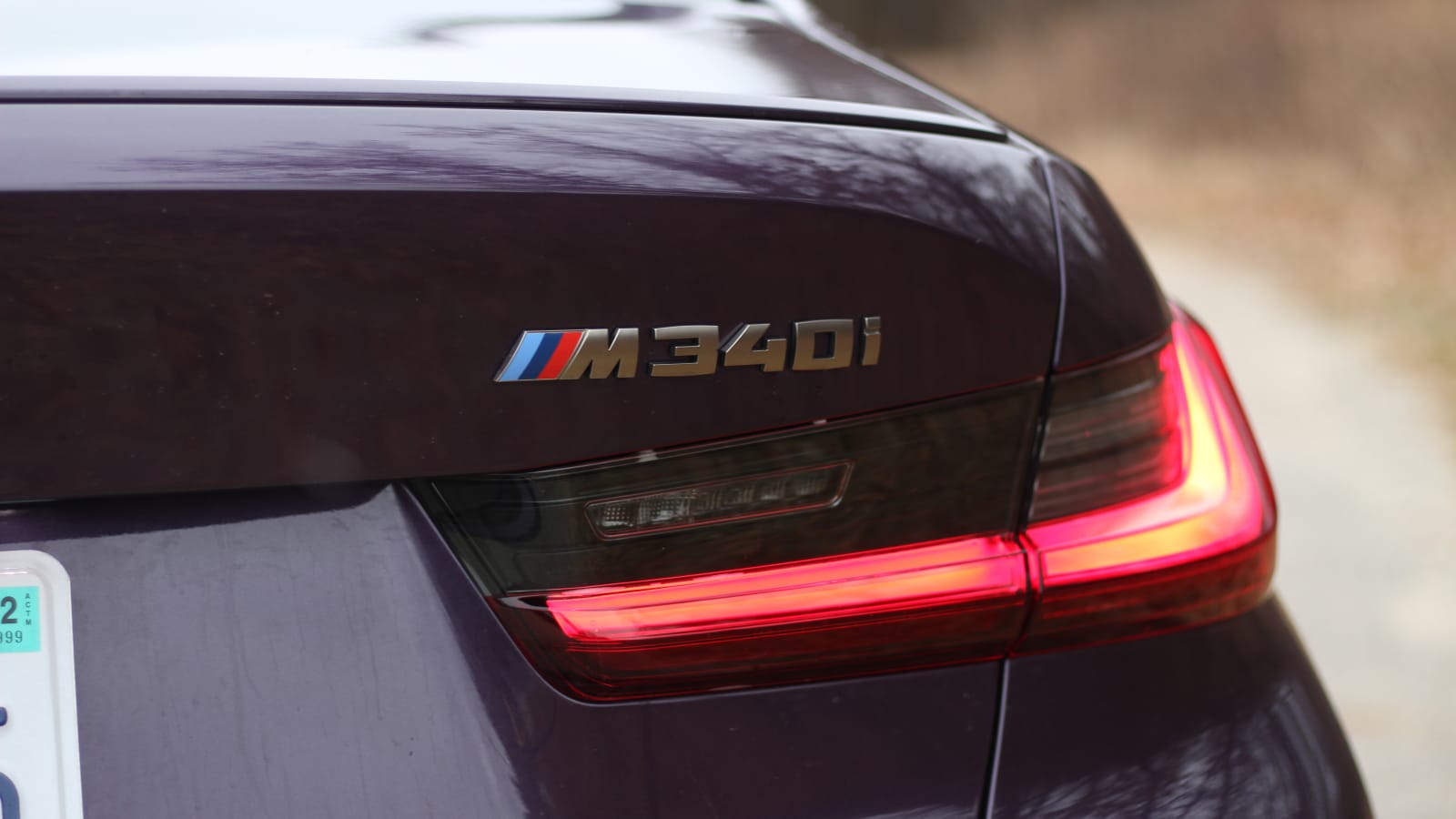Luxury sport sedans are still turning up on the market, and the Acura TLX Type S is one of the freshest cuts of meat in the window. It’s Acura’s big return to Type S performance models. Benchmarked against the proverbial best performance sedans of the segment, Acura is aiming to not just to compete, but to win dogfights like these.
To see if the return of Type S is all it’s cracked up to be, we decided to pin it up against the historical king of sport sedan shootouts: a BMW 3 Series. Specifically, the Type S is taking on the M340i xDrive, which is this Acura’s most natural competitor from Munich. Should the diehard BMW driver make the switch to Japanese performance? Does Type S do enough to lift this Acura up to best Germany’s finest? There are a lot of variables at play here, and they all make it complicated to choose a winner.
The similarities between these two begin from the top of the spec sheet and go down. Both have 3.0-liter turbocharged six-cylinder engines — BMW arranges its cylinders inline, while Acura chooses a V configuration. Quick-shifting automatic transmissions are standard. BMW uses an eight-speed unit, while Acura uses a 10-speed. Both get electronically-controlled dampers, big brakes and sticky summer rubber. They each offer up usable backseat space and reasonably-sized trunks. We’d feel just as confident showing up to an important business meeting in either one as we would at a track day. That’s the beauty of this mid-tier performance segment.
After looking at their specs, it shouldn’t be surprising that the M340i is the quicker of the two here. Its 382 horsepower and 368 pound-feet of torque hit noticeably harder from any speed than Acura’s 355 horses and 354 pound-feet of torque. The Acura is also carrying an extra 232 pounds of curb weight over the Bimmer, which makes the M340i’s 1-second advantage in the 0-60 mph sprint make perfect sense. For the record, BMW quotes a 4.1-second time, and Acura only offers an approximate time of 5 seconds. Both estimates feel accurate.
Beyond sheer acceleration, both engines offer up their own version of tingly feel-goods. BMW’s inline-six is as smooth as ever as it plays its sonorous note all the way to the 7,000 rpm redline. There are few sounds in the automotive universe that surpass the glee we feel when listening to a BMW inline-six at full-chat, and that rule still applies to the M340i. BMW’s engineered crackles and pops of the exhaust are entertaining, but are hardly necessary when you have an engine as sweet as this one.
Acura must’ve known that beating out an engine as good as BMW’s would be difficult, which is why the TLX Type S is the first Acura to get the company’s new performance-focused turbocharged V6. Even if it doesn’t completely measure up to the BMW from a numbers perspective, the Type S engine is still extremely likable. It winds up and howls in a nostalgically pleasant Honda manner, while the quad tailpipes sing an angry, high-pitched tune out into the world. Redline might only be 6,000 rpm, but the high-pitched note coming through the cabin at full throttle is enough to make you think the engine is running at and above 7,000.
The TLX’s noise would be even better if it weren’t always ping-ponging between such short gears, though. With 10 to work with, each upshift doesn’t move the needle too far back in the rev range. That’s ideal to keep the engine in its optimum operating zone, but discourages use of the quick-responding paddles. You end up having to press a paddle or two more than what comes naturally to keep up with how quick the engine runs into redline. Tight gearing is rarely a bad thing, but keeping up with such quick bursts in each gear before the next paddle pull quickly changes from good fun to an extra mental load on the driver. Perhaps eight gears is the maximum number for maximum paddle shifter enjoyment. The M340i’s eight-speed is therefore far more satisfying in this respect, while sharing the Acura’s quick gear change speed. It’s just a shame that the tiny, plastic paddles are so flimsy and lame, leaving us just as happy to leave it in auto. And when you do leave them in auto, both will smartly shift up and down when they should (one of the key upgrades for the Type S over other TLX models), but BMW’s tuning is still just a hair better at predicting exactly what you want.
With both cars set to full attack mode — “Sport+” for Acura and “Sport Plus” for BMW — it’s the TLX Type S that shines brighter. The goodness doesn’t come from fast lap capabilities; surely, the BMW is quicker there. But instead, the TLX Type S wows with its connected chassis and ability to make a driver smile.
You sit lower down in the Acura than you do the BMW. The shape of the steering wheel and driving position is far more natural in the Acura, as the M340i’s wheel just sits a tad too high to be just right. The Acura’s brake pedal has a better initial bite and none of the uncertainty of the BMW’s. Even though we may like the new M3’s steering, the M340i doesn’t benefit from the same feel. It’s numb and synthetic, while the TLX Type S steering tuning does a splendid job of keeping you informed of just how much grip those Pirelli P Zero summer tires have left. Acura properly telegraphs your speed and chassis condition through the wheel and seat, but that communication simply isn’t there in the BMW. There’s no denying the M340i’s ultimate performance is great, but that performance is stony and impersonal. It’s possible to do better, and the TLX Type S is direct evidence.
So yes, the Acura offers better intangibles, but it’s impossible to deny that the BMW’s dynamics and athleticism are anything short of extraordinary. Both are all-wheel drive, but their all-wheel-drive systems are not created equally. Acura’s SH-AWD is one of the most cunning on the market, and gives you proper torque vectoring across the rear axle. It’s a big part of what makes the Acura so agile and eager to shoot to the next corner on a twisty road. Meanwhile, the M340i employs BMW’s active electric differential in back. Unlike the Acura’s buttoned-down SH-AWD, the M340i is going to tickle the childish part of your brain. Its rear-drive bias makes it far easier to wag its tail, and BMW’s sport stability control system is happy to oblige in an instant. You can even do donuts on command, which is something the Acura won’t be doing short of a wet skidpad.
No matter the BMW’s playfulness, the Apex Blue Pearl TLX Type S is the one we kept wanting to hop back in and take another pass with. From the rigid underpinnings, to the double wishbone front suspension’s interaction with the road and imperfect surfaces, the Type S just nails what it means to be both entertaining and super-capable. But even after leaving the Acura, the powertrain in our Daytona Violet Pearl M340i tester kept beckoning us back to the German side of the world. If only there was a way to marry the BMW powertrain and the TLX chassis.
Sorting out which is the better car to use on the daily commute is just as difficult as picking one as the better driver’s car. The TLX Type S offers a slightly calmer and more cosseting ride over rough pavement, but the BMW’s cabin is quieter. City driving is smoother and more efficient with BMW’s 48-volt mild-hybrid system shutting off the engine smoothly and frequently. Efficiency in general is a huge plus in the M340i’s favor. Even with significantly quicker acceleration and more power, the BMW utterly crushes the TLX in fuel economy, as it comes in at 26 mpg combined versus the TLX Type S’ 21 mpg combined. This is more important than it sounds, as the average driver will save about $550 per year in fuel going for the M340i xDrive over the TLX Type S. That means that in just five years’ time, fuel costs alone will have fully made up for the BMW’s higher base price versus the Acura.
While we’re drawn to the TLX’s sporty interior design, the tech and infotainment — minus the Acura’s outstanding ELS audio system — all feel a step behind what’s found in the BMW. It’s largely a wash in the luxury debate. Both are sumptuously appointed sedans, but neither stands out as a seminal, upper-class experience. Any rear seat passengers will prefer sitting in the M340i, but again, it’s close enough to the TLX that passenger comfort is only a half-hearted check in BMW’s favor. The two swap places in terms of real-world trunk space – neither is great, but the Acura just edges out the BMW. In other words, practicality won’t be swaying this debate.
No, what will matter most is getting the best performance and the best daily driver for your dollar. Acura gives you a pretty well decked out car for the Type S’ starting price of $53,845. Add the performance wheels and tires that our test car had, and you’re still left at a reasonable $54,645. In typical BMW fashion, the M340i requires you to open up the checkbook for options, and our test car rang in at $71,570. Nearly all of the extras, minus the $4,500 purple paint, are necessary if you want to walk out the door with a car matching the TLX Type S’ standard feature set.
Having to choose between these two options is a genuinely good problem to have, as you can’t go wrong either way. Engine junkies should gather by the BMW, but maximum value-seekers should migrate Acura’s way. If forced to choose only one, the TLX Type S would find a place in our garage. It out-styles the M340i by a longshot, and it’s the more engaging car to drive. BMW would win in a pure numbers comparison, but the TLX Type S steps in as the superior sport sedan when you toss aside the numbers and simply drive.
Related video:
Source: www.autoblog.com

